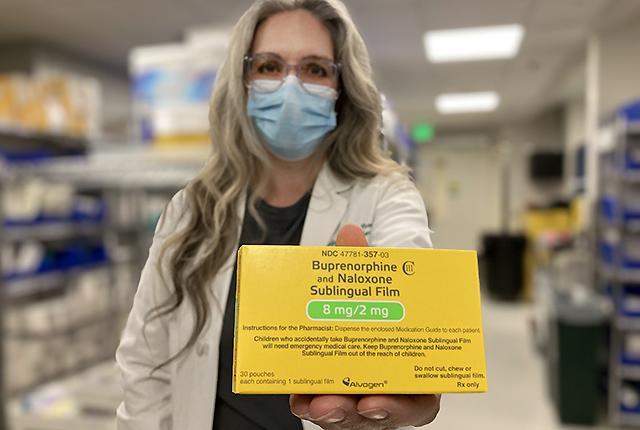
Guidelines for opioid treatment drug ignore fentanyl surge
The FDA should amend its buprenorphine dose limit, which is outdated, according to a recent literature review.
The U.S. Food and Drug Administration should update its guideline for appropriate prescribed dosages of buprenorphine — a medication that relieves opioid withdrawal and reduces overdose deaths — according to a literature review published this month in the Journal of Addiction Medicine.
The FDA specifies buprenorphine's target dose as 16 mg per day, with a limit of 24 mg, but decades of research show that some patients benefit from a higher dose, and the federal limit creates life-threatening barriers, the paper stated. Patients who cannot get relief from withdrawal or cravings will often drop out of treatment and return to using fentanyl despite its high risk, the study suggests.
“The dose should be targeted to a patient’s needs, and not subject to an outdated limit,” said the paper's lead author, Dr. Lucinda Grande, a primary care doctor in Lacey, Washington, who specializes in chronic pain and addiction treatment. She is a clinical assistant professor of family medicine at the University of Washington School of Medicine.
The FDA guideline explicitly states there is no evidence of benefit from higher doses despite many studies that demonstrate a benefit, Grande said. The authors cite 17 published studies showing that doses up to 32 mg/day help patients stay in treatment longer and use illicit drugs less often. The guideline's 24 mg daily limit is based on data from more than 20 years ago, when opioids were less potent and long before the national fentanyl crisis, the authors reported.
Buprenorphine acts on opioid receptors in the brain and gives patients relief from withdrawal symptoms and craving for dangerous opioids. At higher doses, it also blocks the euphoria and the overdose risk of fentanyl, according to co-author Dr. Mark Greenwald, a professor and psychopharmacologist at Wayne State University in Michigan.
Providers usually prescribe buprenorphine in a film or pill where it is combined with naloxone, a largely inactive ingredient intended to reduce misuse. The treatment is often referred to by the active ingredient buprenorphine or by the brand name Suboxone.
If the dose is too low, “many patients just stop using it, and they will go back to fentanyl,” Grande said.
More than 80,000 Americans died of opioid overdoses in 2021, an increase of 61% in only two years, according to data published in May by the Centers for Disease Control and Prevention. The mortality surge is largely due to exposure to unregulated, illicitly manufactured fentanyl and its analogs. Drug overdose deaths reached 109,000 in 2022, with Washington and Wyoming showing the highest year-to-year increase, at 22%.
Critics of raising the dose limit have argued that patients might try to trick the provider into prescribing more buprenorphine than they need, so they can divert it. The article acknowledges research reporting that patients do sometimes give the medication to someone else, but most often to a friend to treat withdrawal when legal access is unavailable.
The evidence compiled in this report was presented at the American Society of Addiction Medicine’s annual meeting a year ago and was “very well received” by the doctors there, Grande said. Following that meeting, a petition was sent to the FDA requesting a correction to the dosing guideline, signed by 10 state chapters of the society.
“So far, nothing has happened,” Grande said. “Meanwhile almost 300 people are dying from drug overdoses every day in the United States. The FDA needs to bypass bureaucratic obstacles and fast-track a correction to the guideline to acknowledge the extensive evidence that higher doses work better.”
This news item was written by Barbara Clements - 253-740-5043, bac60@uw.edu.
For details about UW Medicine, please visit https://uwmedicine.org/about.
Tags:opioidsbuprenorphine